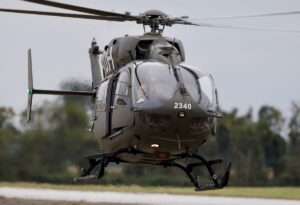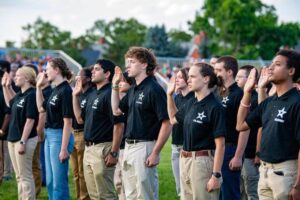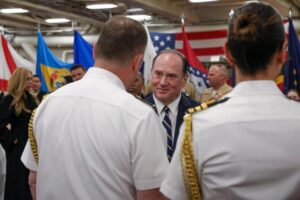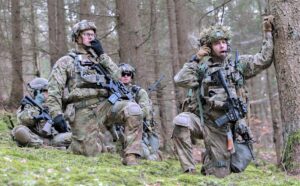Japan’s defense strategy is undergoing a significant transformation as it seeks to modernize its pilot training capabilities. With the advent of advanced aircraft like the F-35, the Japan Air Self-Defense Force (JASDF) is compelled to reassess its training infrastructure to bridge the gap in fighter pilot proficiency.
The JASDF is in the process of updating its training fleet, having selected Textron’s T-6JP Texan II to replace the Fuji T-7 for basic training. The next step involves finding a successor for the Kawasaki T-4 intermediate jet trainer, which has been in service since 1988. The T-4 is now seen as inadequate for preparing pilots for the sophisticated F-35A/B fighters.
In response, Tokyo is evaluating possible replacements, having issued a request for information in October 2024 with submissions due by May 8, 2025. This has led to various domestic and international vendors showcasing their offerings at DSEI Japan in Chiba, which took place from May 21-23.
American advantage?
Boeing has put forth its T-7A Red Hawk as a prime candidate. John Suding, Boeing’s Executive Director for Defense and Government Services in East Asia, stated, “We believe the T-7 would be a fantastic fit.” He emphasized the similarity between the United States Air Force’s training and Japan’s, highlighting the commonalities with F-35 and F-15 upgrades.
The potential selection of an American trainer is bolstered by a 2024 U.S.-Japan summit, where both nations discussed joint development of a new trainer aircraft to replace the T-4 fleet.
European edge
Leonardo is another contender, promoting its M-346 Block 20 with enhanced avionics and cockpit displays, set to be delivered to Austria in 2028. Diego Siccardi, who leads Leonardo’s international efforts in the Far East and Oceania, noted that Japanese pilots have already been training on M-346s in Italy. He remarked, “They’re really happy about the training level they’re getting there.”
Japan’s growing collaboration with Europe through the Global Combat Air Programme (GCAP), involving Leonardo, is another factor in the M-346’s favor. Siccardi also mentioned Leonardo’s commitment to technology transfer and cooperation with Japanese partners, aiming to “maximize the indigenous content.”
Japanese next-gen
Mitsubishi Heavy Industries is also in the race, developing a T-X trainer aircraft. Although still in its early stages, the T-X promises an advanced cockpit and embedded simulator functions. The T-X could eventually replace other trainer variants like the F-2B and F-15DJ.
However, the development timeline poses a challenge, as the T-X would take years to ready for procurement. Its feasibility hinges on the JASDF’s timeline for phasing out the T-4 and whether a domestic design is prioritized.
Training pipeline
Amidst these developments, the overhaul of Japan’s training system is equally crucial. CAE, a company eager to assist, has noted that the current setup relies on outdated assets, impacting training effectiveness. Marc-Olivier Sabourin, CAE’s Division President, Defence & Security International, remarked on the significant proficiency gap between trainee pilots and F-35 operations.
While CAE has no existing JASDF contracts, interest in integrated learning environments is rising, especially following a successful study involving virtual reality simulators. Gary Eves from CAE highlighted the potential of AI-based coaching, stating, “We completed the study, and we were able to show that within just one hour of AI-based coaching, I could make about a 20% improvement on their grade performance without an instructor.”






